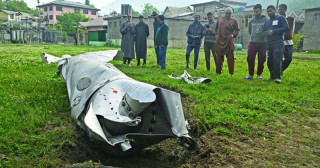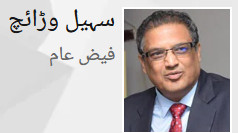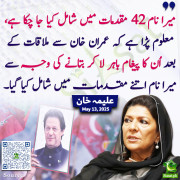Citizen X
(50k+ posts) بابائے فورم
There was a time when Muslims led the world in science, technology, philosophy, and education. This Islamic Golden Age centered in Baghdad, then the world’s largest city, began under Abbasid Khalifa Harun al-Rashid (786–809 CE) with the founding of the House of Wisdom (Bayt al-Ḥikmah). Here, scholars from diverse cultures translated classical knowledge into Arabic and contributed original works. The House of Wisdom was destroyed by the Mongols in 1258, though its decline began earlier.
At the time, adherents of the Islamic faith in Baghdad were hundreds of years ahead of the rest of the world in technological, scientific, and philosophical understanding but somehow regressed back to the dark ages after its decline and eventual fall. Lets see what was the cause of this regression in the Muslim world.
During the Islamic Golden Age, between the years 786–846 CE, were able to not only determine that the Earth was round but were also able to calculate the size of the Earth, the degrees of longitude and latitude of the Earth to amazing accuracy, as well as making some of the most accurate maps of the world at the time. Then from such advancement, they deteriorated to believing that the Earth rested on top of a whale, and when the whale shook its head, the Earth would experience earthquakes.
In Ibn Kathir (1300–1373 CE / 774 AH) Tafsir the most recommended and revered tafsir of them all , written centuries after the death of the prophet Muhammad, we read from his interpretation of Sura 68:1 that the earth is on top of a giant whale.
[68:1] NuN, the pen, and what they (the people) write.
In Arabic, the letter “ن / N” is pronounced “نون / noon,” which also means whale or large fish. In his Tafsir, Ibn Kathir offers three interpretations of this verse. Interestingly, many English translations omit details, but the original Arabic focuses heavily on the first interpretation, which can be summarized as:
In the beginning, Allah created the pen before all else. The pen asked, “what do I write,” and Allah told it to write the letter ن “nun” or “N” which is actually a whale upon whose back he balanced the entire world:
“The first thing that Allah created is the pen, it said “What do I write,” Allah said “write the fate of existence all that will happen from this day until the day of judgment, then Allah created the “Whale (Nun)” and raised the mist of the water and rent it from the sky and spread the earth on the back of the Whale (Nun). The Whale (Nun) was disturbed, and the earth was extended, and earth was fixed in place with the mountains, verily they are the pride (of Allah) upon the earth.”
In the Sahih Hadith by Ibn Abbas, collected by At-Tabari (839–923 CE / 224 AH–310 AH), it claims that the reason that the mountains are described as pegs in the Qur’an is that otherwise, the earth would fall off of the back of the whale if the pegs were not there to hold it in place.

Another hadith from Kitab Al Kafi tells us how earthquakes happen.

I remember my grandfather use to tell me similar stories as a kid that the earth was supported on a bulls horn and when the bull moved from one horn to another that's why earthquakes happened. Now I know how those stories came to be.
As recently as 1975, and in the same location where the Quran was revealed, the president of the Islamic University of Medina, Saudi Arabia, Sheikh Abdul Aziz Ben Baz, declared that the earth is flat and standing still!
Under Khalifa al-Ma’mun (813–833 CE), al-Mu’tasim (833–842 CE), and al-Wathiq (842–847 CE), but declined under al-Mutawakkil (847–861 CE). What was it about al-Mutawakkil’s ideology, and that of his predecessors, that would have such an impact on the trajectory of knowledge and understanding within the Muslim world?
So how did the Muslims go from to the pioneers of knowledge and sciences to this dramatic shift in understanding and regression, pushing Islam back to the dark ages?
At that time the Mu’tazila ideology was dominant from 833–851 CE, which emphasized God’s oneness and justice, human free will, and the Quran’s creation. While known for debating the Quran’s creation, their greater impact was in critiquing Hadith. They believed the Prophet forbade writing Hadith beyond the Quran and viewed circulating Hadith as unreliable or fabricated. They distrusted Abu Huraira and criticized scholars who judged Hadith by the isnad (chain) rather than the matn (content), rejecting any Hadith that contradicted the Quran.
Al-Ma’mun and his successors, al-Mu’tasim and al-Wathiq, supported the Mu’tazila ideology. Their Quran-first approach encouraged scientific inquiry, as the Quran did not conflict with science and reason. However, Hadith often clashed with both, limiting its acceptance.
For 150 years after the Prophet’s death, the Quran was the sole source of religious law. As Islam expanded, followers faced questions not directly answered in the Quran. Interestingly, the Quran addresses this in the following verse:
[5:101] O you who believe, do not ask about matters which, if revealed to you prematurely, would hurt you. If you ask about them in light of the Quran, they will become obvious to you. GOD has deliberately overlooked them. GOD is Forgiver, Clement.
Despite the Quran’s clear guidance, some sought Hadith to clarify issues, which ironically only added confusion. Until the second-century Hijra, Hadith—though circulating—was not considered a legitimate source of law, with no formal effort to document or preserve it. The earliest written Hadith collection is Malik ibn Anas’s Muwatta (711–795 CE), with ~1,720 narrations. At its release, most still saw the Quran as primary, but use the Hadith to give color to the verses of the Quran as well as guidance for topics that were not covered in the Quran and this led to all kinds of new prohibitions and innovations that crept into the religion, but they rejected Hadith that contradicted the Quran. This was due to the lack of established Hadith sciences and widespread false Hadith, so people relied on the Quran and reason for jurisprudence. Over time, as Hadith sciences formalized, Muslims were increasingly pressured to accept Hadith, often justified by the Quran’s call to “obey God and His messenger.”
This ideology of Hadith first, Quran second really took shape during the Shafi school of thought, founded by Al-Shafi’i (767–820 CE), who argued that the Quran must be understood through Hadith. This placed the Sunna above the Quran. They also claimed that if a Hadith’s isnad was sound, the Hadith was valid, no matter how absurd its content seemed.
After the Shafi school of thought came the Hanbali, The Hanbali school, founded by Ahmad ibn Hanbal (780–855 CE), built on al-Shafi’i’s approach, insisting Hadith should override the Quran if authentic. They taught that Hadith outweigh reason, as the Prophet was infallible. Hanbalis focused solely on isnad reliability, holding that a sound chain guaranteed a sound Hadith, and even a flawed Hadith was preferable to a scholar’s opinion.
These people say if the chain of narration is sound you have to accept this information and many lies, misunderstandings, conflicts arise by someone's interpretation of what was said 200 years after the prophet's death none of this is reliable. And not only that it conflicts with the very statements of the Quran that it is complete, fully detailed, has explanations of everything and we should not accept any other Hadith aside these specific words that God gave to the Messenger in the form of the Quran.
And all these and similar form the four major school of thoughts of Sunni Islam.
Eventually, this ideology become predominant and was eventually adopted by the tenth Abbasid khalifa, al-Mutawakkil, who openly endorsed Hadith over Quran. Unlike his predecessors, al-Mutawakkil was not interested in science and moved away from rationalism, seeing the spread of Greek philosophy as anti-Islamic. The idea was that reason and logic should never be taken over the supposed teachings attributed through the sayings and actions of the prophet.
Al-Mutawakkil and his successors violently persecuted any Muslims and non-Muslims they deemed unorthodox to their Sunni ideology. This included the top scholars of The House of Wisdom. For instance, al kindi the great philosopher and mathematician was beaten, and his library was temporarily confiscated and died “a lonely man” in Baghdad during the reign of al Mutamid (r. 870–892).
This shift in ideology pushed the adherents of Islam from the most advanced forward-thinking group of people back to the dark ages. Rather than a Quran-first ideology, the victors accepted a worldview that put the supposed teachings of the prophet over the words of God in the Quran. Their ideology is that if the isnad, chain of narration, is sound, then it doesn’t matter how illogical the Hadith is it should be considered irrefutable truth.
And any hadith apologist makes tall claims that the imams said if you find anything of mine against the Quran discard it, or that scholars have vetted all the fake and contradictory hadith. Then all I have so say then why are these fabricated and contradictory hadith which have led to all kinds of new prohibitions and innovations never seen in the Quran still being followed and still printed as part of the Sahih Hadith corpus.
If what the apologists really claim to be true then all these hadith would have be thrown out, after all your "hadith scientists" have had 1200 years to get this job done.
At the time, adherents of the Islamic faith in Baghdad were hundreds of years ahead of the rest of the world in technological, scientific, and philosophical understanding but somehow regressed back to the dark ages after its decline and eventual fall. Lets see what was the cause of this regression in the Muslim world.
During the Islamic Golden Age, between the years 786–846 CE, were able to not only determine that the Earth was round but were also able to calculate the size of the Earth, the degrees of longitude and latitude of the Earth to amazing accuracy, as well as making some of the most accurate maps of the world at the time. Then from such advancement, they deteriorated to believing that the Earth rested on top of a whale, and when the whale shook its head, the Earth would experience earthquakes.
In Ibn Kathir (1300–1373 CE / 774 AH) Tafsir the most recommended and revered tafsir of them all , written centuries after the death of the prophet Muhammad, we read from his interpretation of Sura 68:1 that the earth is on top of a giant whale.
[68:1] NuN, the pen, and what they (the people) write.
In Arabic, the letter “ن / N” is pronounced “نون / noon,” which also means whale or large fish. In his Tafsir, Ibn Kathir offers three interpretations of this verse. Interestingly, many English translations omit details, but the original Arabic focuses heavily on the first interpretation, which can be summarized as:
In the beginning, Allah created the pen before all else. The pen asked, “what do I write,” and Allah told it to write the letter ن “nun” or “N” which is actually a whale upon whose back he balanced the entire world:
“The first thing that Allah created is the pen, it said “What do I write,” Allah said “write the fate of existence all that will happen from this day until the day of judgment, then Allah created the “Whale (Nun)” and raised the mist of the water and rent it from the sky and spread the earth on the back of the Whale (Nun). The Whale (Nun) was disturbed, and the earth was extended, and earth was fixed in place with the mountains, verily they are the pride (of Allah) upon the earth.”
In the Sahih Hadith by Ibn Abbas, collected by At-Tabari (839–923 CE / 224 AH–310 AH), it claims that the reason that the mountains are described as pegs in the Qur’an is that otherwise, the earth would fall off of the back of the whale if the pegs were not there to hold it in place.

Another hadith from Kitab Al Kafi tells us how earthquakes happen.

I remember my grandfather use to tell me similar stories as a kid that the earth was supported on a bulls horn and when the bull moved from one horn to another that's why earthquakes happened. Now I know how those stories came to be.
As recently as 1975, and in the same location where the Quran was revealed, the president of the Islamic University of Medina, Saudi Arabia, Sheikh Abdul Aziz Ben Baz, declared that the earth is flat and standing still!
Under Khalifa al-Ma’mun (813–833 CE), al-Mu’tasim (833–842 CE), and al-Wathiq (842–847 CE), but declined under al-Mutawakkil (847–861 CE). What was it about al-Mutawakkil’s ideology, and that of his predecessors, that would have such an impact on the trajectory of knowledge and understanding within the Muslim world?
So how did the Muslims go from to the pioneers of knowledge and sciences to this dramatic shift in understanding and regression, pushing Islam back to the dark ages?
At that time the Mu’tazila ideology was dominant from 833–851 CE, which emphasized God’s oneness and justice, human free will, and the Quran’s creation. While known for debating the Quran’s creation, their greater impact was in critiquing Hadith. They believed the Prophet forbade writing Hadith beyond the Quran and viewed circulating Hadith as unreliable or fabricated. They distrusted Abu Huraira and criticized scholars who judged Hadith by the isnad (chain) rather than the matn (content), rejecting any Hadith that contradicted the Quran.
Al-Ma’mun and his successors, al-Mu’tasim and al-Wathiq, supported the Mu’tazila ideology. Their Quran-first approach encouraged scientific inquiry, as the Quran did not conflict with science and reason. However, Hadith often clashed with both, limiting its acceptance.
For 150 years after the Prophet’s death, the Quran was the sole source of religious law. As Islam expanded, followers faced questions not directly answered in the Quran. Interestingly, the Quran addresses this in the following verse:
[5:101] O you who believe, do not ask about matters which, if revealed to you prematurely, would hurt you. If you ask about them in light of the Quran, they will become obvious to you. GOD has deliberately overlooked them. GOD is Forgiver, Clement.
Despite the Quran’s clear guidance, some sought Hadith to clarify issues, which ironically only added confusion. Until the second-century Hijra, Hadith—though circulating—was not considered a legitimate source of law, with no formal effort to document or preserve it. The earliest written Hadith collection is Malik ibn Anas’s Muwatta (711–795 CE), with ~1,720 narrations. At its release, most still saw the Quran as primary, but use the Hadith to give color to the verses of the Quran as well as guidance for topics that were not covered in the Quran and this led to all kinds of new prohibitions and innovations that crept into the religion, but they rejected Hadith that contradicted the Quran. This was due to the lack of established Hadith sciences and widespread false Hadith, so people relied on the Quran and reason for jurisprudence. Over time, as Hadith sciences formalized, Muslims were increasingly pressured to accept Hadith, often justified by the Quran’s call to “obey God and His messenger.”
This ideology of Hadith first, Quran second really took shape during the Shafi school of thought, founded by Al-Shafi’i (767–820 CE), who argued that the Quran must be understood through Hadith. This placed the Sunna above the Quran. They also claimed that if a Hadith’s isnad was sound, the Hadith was valid, no matter how absurd its content seemed.
After the Shafi school of thought came the Hanbali, The Hanbali school, founded by Ahmad ibn Hanbal (780–855 CE), built on al-Shafi’i’s approach, insisting Hadith should override the Quran if authentic. They taught that Hadith outweigh reason, as the Prophet was infallible. Hanbalis focused solely on isnad reliability, holding that a sound chain guaranteed a sound Hadith, and even a flawed Hadith was preferable to a scholar’s opinion.
These people say if the chain of narration is sound you have to accept this information and many lies, misunderstandings, conflicts arise by someone's interpretation of what was said 200 years after the prophet's death none of this is reliable. And not only that it conflicts with the very statements of the Quran that it is complete, fully detailed, has explanations of everything and we should not accept any other Hadith aside these specific words that God gave to the Messenger in the form of the Quran.
And all these and similar form the four major school of thoughts of Sunni Islam.
Eventually, this ideology become predominant and was eventually adopted by the tenth Abbasid khalifa, al-Mutawakkil, who openly endorsed Hadith over Quran. Unlike his predecessors, al-Mutawakkil was not interested in science and moved away from rationalism, seeing the spread of Greek philosophy as anti-Islamic. The idea was that reason and logic should never be taken over the supposed teachings attributed through the sayings and actions of the prophet.
Al-Mutawakkil and his successors violently persecuted any Muslims and non-Muslims they deemed unorthodox to their Sunni ideology. This included the top scholars of The House of Wisdom. For instance, al kindi the great philosopher and mathematician was beaten, and his library was temporarily confiscated and died “a lonely man” in Baghdad during the reign of al Mutamid (r. 870–892).
This shift in ideology pushed the adherents of Islam from the most advanced forward-thinking group of people back to the dark ages. Rather than a Quran-first ideology, the victors accepted a worldview that put the supposed teachings of the prophet over the words of God in the Quran. Their ideology is that if the isnad, chain of narration, is sound, then it doesn’t matter how illogical the Hadith is it should be considered irrefutable truth.
And any hadith apologist makes tall claims that the imams said if you find anything of mine against the Quran discard it, or that scholars have vetted all the fake and contradictory hadith. Then all I have so say then why are these fabricated and contradictory hadith which have led to all kinds of new prohibitions and innovations never seen in the Quran still being followed and still printed as part of the Sahih Hadith corpus.
If what the apologists really claim to be true then all these hadith would have be thrown out, after all your "hadith scientists" have had 1200 years to get this job done.






































